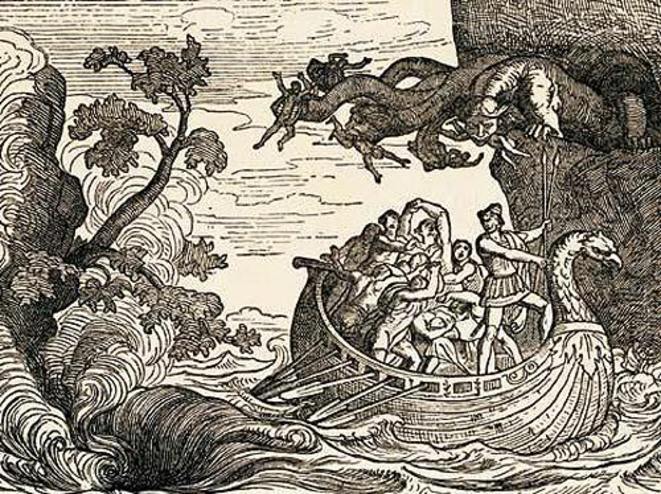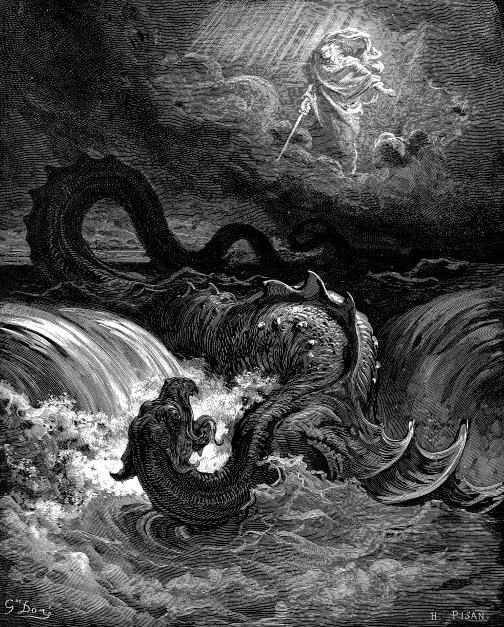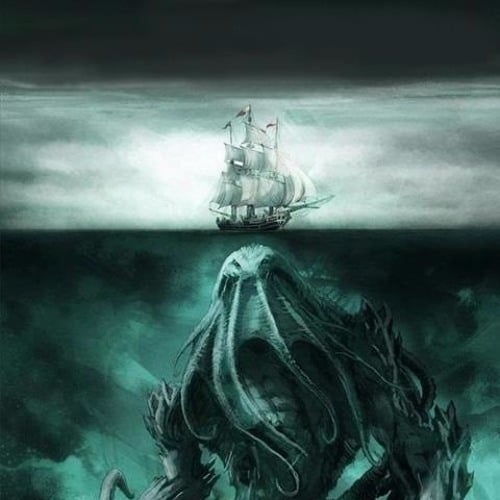The Sea and Its Monsters: Some of the Creatures to Have Populated the Oceans
In distinct historical epochs, the sea has been populated by imaginary beings that have shaped our nescience.
Our planet still holds many mysteries. If any one of these has persisted, since humans ventured out to explore their environment, it’s the bottom of the sea. Even in an era like our own, which presumes to boast of advanced technology, the ocean depths continue to elude our understanding. Perhaps this is less so than was true a couple of centuries ago, but it’s still nearly sufficient to vindicate, again, the phrase by which old maps indicated unexplored areas: HIC SVNT DRACONES; “here be dragons.”
Likewise, because the unknown is such a great stimulus to fantasy, humans have populated the sea with non-existent creatures intended to express the same reverence for our desire to know. The bottom of the sea scares us, but at the same time it attracts us.
Thus we share a brief semblance of maritime creatures which, at varying times, have inhabited the nightmares of both sailors and any aspiring explorers of the unknown.
Scylla and Charybdis

In the Greek imagination of antiquity, near the strait now called Messina (between Sicily and mainland Italy), were two monsters deadly to any vessel: Scylla, with six heads, and Charybdis, a whirlwind of impressive strength. One distinctive feature, so typical of Greek mythology, was that boaters had to make an impossible choice: avoiding one always meant approaching the other. Only Ulysses, ingenious as he was, could advance through the strait, because he chose to confront Scylla (at the loss of a few sailors) and not Charybdis (which would risk the entire crew).
Leviathan

The Renaissance was perhaps the first grand era of humanity’s great explorations. Prior to that, humankind walked and rode on the planet, but had perhaps never widened geographical reality so much as thereafter. The Renaissance coincided with the proliferation of sea creatures. One of these, the Leviathan, with roots in the biblical Book of Job and elsewhere in Jewish literature, in the 15th and 16th centuries rose to some fame as an inhabitant of the oceans beyond Europe. Dürer, for example, traveled in 1520 to Zeeland, that northernmost province in present-day Netherlands, hoping to glimpse the great whale. Part of this fascination certainly survived until the disembarkation of Herman Melville.
Cthulhu

“A monster of vaguely anthropoid outline, but with an octopus-like head whose face was a mass of feelers, a scaly, rubbery-looking body, prodigious claws on hind and fore feet, and long, narrow wings behind.” Thus H. P. Lovecraft described the Cthulhu, a creature revered as a deity in his personal mythology.
Related Articles
When ancient rituals became religion
The emergence of religions irreversibly changed the history of humanity. It’s therefore essential to ask when and how did ancient peoples’ rituals become organized systems of thought, each with their
Larung Gar, the valley that is home to thousands of Buddhist monks
If we think about the monastic life it is very probable that we think about solitude, seclusion, silence and a few other qualities whose common denominator is the appropriate isolation for mediation
Dialogue with the Dalai Lama on science and spirituality
The Dalai Lama has been interested in science since he was a child. Over the years he’s visited many laboratories and has attended conferences that discuss consciousness from the scientific point of
A New Year's resolution for the earth
Worrisome quantities of waste are generated by human populations. Especially in cities, these have reached unprecedented and alarming levels. A largely uncontrolled practice, it affects everything on
The Dark Mountain Project: or how literature can confront ecocide
One impulse from a vernal wood May teach you more of man, Of moral evil and of good, Than all the sages can. Wordsworth, “The Tables Turned” (fragment) Words are elementary. The only reason we can
Are there no women in the history of philosophy?
Do only men philosophize? This could sound like a silly question, but if we quickly review the names of philosophers, from Aristotle to Slavoj Žižek, it would appear to be an exercise that is
Things that are about to disappear: photography as environmental conservation
Cristina Mittermeier is the founder of the International League of Conservationist Photography (iLCP), and is at the front of a modern movement to use photography with environmental purposes. Her work
Architecture And Music; An Affair That Acts On The Matter
A composition is like a house you can walk around in. — John Cage Perhaps music, more than the art of sound, is the art of time. That’s why its communion with space, and architecture, is so often so
Psycho-geography (On The Ritual Casting of a City)
Mrs. Dalloway walked down the streets of London guided by an “internal tide” that made her stop somewhere, enter a store, turn at the corner and continue her journey, as if she were adrift. La dérive
A Theme Park Inspired by Hayao Miyazaki is About to Open …
One of animation’s most spectacular exponents, Hayao Miyazaki, is the artist who transformed the direction of traditional animation forever.










